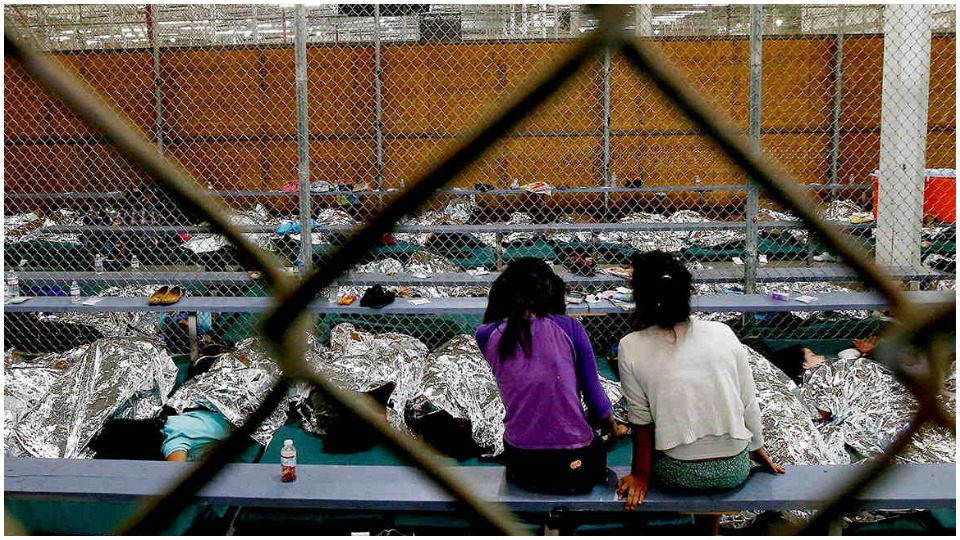
In Houston, Texas, a 9-year-old Guatemalan boy sits at the Shiloh Treatment Center, a private facility licensed by U.S. Customs and Border Protection to house detained migrant children. He’s likely wondering when, or if, he’ll ever see his family again. It’s been 14 months since government agents took him from his father at the Arizona border. Does he even know that his dad was deported shortly after they arrived in the U.S.? Does he know that the government apparently has no plan to ever reunify them?
More than a year has passed since the Trump administration instituted its “zero tolerance policy” that ordered the state kidnapping of migrant children from their families at our southern border. Even though the practice supposedly ended in June 2018, a new report from the House Oversight and Reform Committee this week declared in no uncertain terms that “the nightmare of child separations continues.” The harrowing experience of that 9-year-old Guatemalan boy is one of dozens detailed in the report, one of the children used by Trump for his own political gain.
A year on from “zero tolerance,” and at least seven children (that we know of) have died in government custody or shortly after being released. Since Trump came to office, at least two dozen immigrants have died in Immigration and Customs Enforcement facilities. And as of today, tens of thousands of migrants are still held in over 200 immigrant prisons and jails in the United States. If the Immigrations and Customs Enforcement dragnet announced for this weekend proceeds, thousands more will be joining them—at least until they are deported.

In these facilities, detainees face psychological torture, sexual abuse, sleep deprivation, daily humiliation, denial of necessities like decent food and toothbrushes, and more. Racist guards laugh at them and retaliate against them when they commit offenses as small as asking for extra blankets when sleeping on cold concrete floors.
They are pawns in Trump’s political game, the targets of racist and anti-immigrant hatred aimed at mobilizing his base of voters. These migrants are being made the scapegoats for a failed economic system that has hollowed out industry in the U.S. and devastated communities around the nation. The neoliberal capitalist model destroyed millions of jobs in the 1980s and ’90s, leaving resentment and anger in its wake. The corporate class that profited from downsizing, factory closures, sub-prime mortgage schemes, and financial wizardry enriched themselves while leaving workers and the poor looking for someone to blame.
Meanwhile, in Latin America, U.S. policies of one-sided trade, military intervention, and support for right-wing authoritarians have sent millions fleeing poverty, unemployment, and violence. Whether it was destroying Mexico’s rural economy with a flood of U.S. farm products under NAFTA, training death squads in Central America, or backing coups like the one in Honduras in 2009, one only needs to look toward Washington and Wall Street to find the source of the mass northward migration we see today. And while the current occupant of the White House dutifully carries on and escalates these imperial efforts, they are a tradition which long predates him and crosses party lines.
After their win in 2016, Trump and the extreme right believed they found a winning formula for activating their base: exploit economic resentment and stoke racist and nationalist sentiments. The camps—like the Muslim ban, the support for white nationalists at Charlottesville, the Mexican border wall, and the trade war against China—are manifestations of that strategy.
In the meantime, the president’s backers in the private prison and defense industries are cashing in on immigrant injustice, raking in billions in profits operating and supplying the camps. Tech companies like Palantir and Amazon are putting money in the bank by providing the data infrastructure that powers ICE deportations.
But the attacks against migrants and refugees are mobilizing groups that are much bigger than Trump’s base of reactionary voters and prison profiteers.
Across the United States, along our southern border with Mexico, and in several other countries this weekend, people are marching on immigrant detention centers, ICE offices, Border Patrol prisons, and U.S. embassies and consulates. They’re demanding the closure of these government concentration camps, where thousands of human beings are locked away for the crime of seeking refuge from economic oppression and violence.
In El Paso, Texas, demonstrators will be going to an outdoor concentration camp where migrants are housed underneath a bridge with no running water. They will protest at a child detention facility in Homestead, Fla. that has been the site of alleged mass abuse and neglect. In Washington, D.C., activists will descend on Lafayette Park to demand Congress impeach the president. In Fort Sill, Okla., they’ll stand vigil outside a facility that served as a concentration camp for Japanese-Americans during World War II and once again houses imprisoned immigrants today.
In Philadelphia Friday afternoon, thousands of local residents as well as hundreds of attendees of the Netroots Nation conference of progressive activists encircled the historic city hall and marched on ICE’s downtown office to demand that the nearby Berks detention center be shuttered and that another facility planned for North Philadelphia by the private company Vision Quest be blocked.

The announcement by the Trump administration that it will sweep up immigrants in major cities starting Saturday or Sunday make this weekend’s demonstrations even more imperative. Mass deportation raids will only add to the overcrowded and inhumane conditions in the camps.
As Jess Morales Rocketto of the National Domestic Workers Alliance told Netroots attendees and a national audience online Thursday evening, “It will take more than symbolic actions to close the concentration camps.” After all, she said, “it took a war to close the last ones.” When the ICE raids happen, help your neighbors. Remind people that ICE agents usually don’t have warrants, so they don’t have to open the door. Sponsor families to get them out of custody. Volunteer at sanctuary sites. Contact your members of Congress and tell them to help expose what’s going on in the camps. Protest in such numbers that the camps themselves become ungovernable.
Do everything you can to let the children thrown away by the Trump administration know, in the words of Morales Rocketto, “No están solos”—You are not alone.
When Hitler’s concentration camps were liberated in 1945, the world said never again. When the U.S. finally apologized for the Japanese internment camps, it said never again.
Never again is now.












Comments